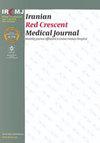2021年伊朗卡姆沙赫尔县18岁以上人群新冠肺炎焦虑与心理健康的关系
IF 0.2
4区 医学
Q3 MEDICINE, GENERAL & INTERNAL
引用次数: 0
摘要
背景:新冠肺炎是21世纪的第三大流行病,具有高度传染性,可因严重身体问题的发展和生活质量的降低而引起焦虑。焦虑是几乎所有人类在生活中都会经历的一种心理状态。然而,如果它超过了中等水平,就被认为是一种精神障碍。因此,本研究旨在了解Qaemshahr县18岁以上人群的焦虑水平、心理健康状况及其相关因素。考虑到该县的人口,采用方便抽样法从农村人口中选择40%的参与者,从城市人口中选择60%的参与者。使用人口统计学问卷(7项)、包括躯体(身体)焦虑和心理(心理)焦虑部分的冠状病毒疾病焦虑量表(CDAS)和12项一般健康问卷(GHQ)收集数据。在SPSS 25软件中使用描述性和推断性统计检验(多元线性回归分析、独立样本t检验、单因素方差分析和Pearson检验)进行数据分析。结果:心理健康平均分为22.93±8.9,占问卷总分的63.69%。焦虑总分为9.46±6.89,占问卷总分的31.53%。根据结果,身体焦虑本身预测了31%的因变量(心理健康)。结论:新冠肺炎导致的心理健康与焦虑之间存在显著的负相关。换句话说,焦虑水平越高,心理健康水平就越低。焦虑也是威胁健康的潜在变量。此外,已婚、离婚和丧偶的参与者的心理焦虑平均得分高于单身参与者。本文章由计算机程序翻译,如有差异,请以英文原文为准。
The Relationship between Anxiety Resulting from COVID-19 and Mental Health in the Population Over 18 Years Old in Qaemshahr County, Iran, 2021
Background: COVID-19 is the third pandemic of the 21st century, is highly contagious, and can cause anxiety due to the development of serious physical problems and reduction of quality of life. Anxiety is a psychological state experienced by nearly all humans in life. However, it is considered a mental disorder if it exceeds its moderate level. Therefore, this study aimed to determine the anxiety level, mental health, and their related factor in the population above 18 years old in Qaemshahr County.
Methods: This descriptive, correlational study was conducted on 400 individuals in Qaemshahr County. Given the population of this county, convenience sampling was employed to select 40% of the participants from the rural population and 60% from the urban population. The data were collected using a demographic questionnaire (7 items), the Corona Disease Anxiety Scale (CDAS) including somatic (physical) anxiety and psychic (mental) anxiety sections, and the 12-item General Health Questionnaire (GHQ). Descriptive and inferential statistical tests (multiple linear regression analysis, independent sample t-test, one-way ANOVA, and Pearson’s test) were used in the SPSS 25 software for data analysis.
Results: The mean score of mental health was 22.93±8.9, which accounted for 63.69% of the total score of the questionnaire. The total mean score of anxiety was also 9.46±6.89, which contributed to 31.53% to the total score of the questionnaire. According to the results, physical anxiety per se predicted 31% of the dependent variable (mental health).
Conclusion: The results showed a significant negative correlation between mental health and anxiety resulting from COVID-19. In other words, the higher the anxiety level, the lower the level of mental health would be. Anxiety also acted as an underlying variable threatening health. Moreover, the mean score of mental anxiety was higher in married, divorced, and widowed participants than in single ones.
求助全文
通过发布文献求助,成功后即可免费获取论文全文。
去求助
来源期刊

Iranian Red Crescent Medical Journal
MEDICINE, GENERAL & INTERNAL-
CiteScore
1.16
自引率
0.00%
发文量
0
期刊介绍:
The IRANIAN RED CRESCENT MEDICAL JOURNAL is an international, English language, peer-reviewed journal dealing with general Medicine and Surgery, Disaster Medicine and Health Policy. It is an official Journal of the Iranian Hospital Dubai and is published monthly. The Iranian Red Crescent Medical Journal aims at publishing the high quality materials, both clinical and scientific, on all aspects of Medicine and Surgery
 求助内容:
求助内容: 应助结果提醒方式:
应助结果提醒方式:


